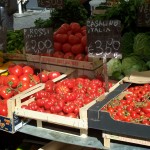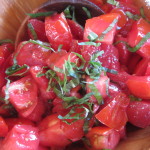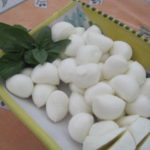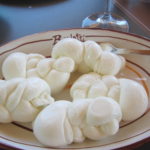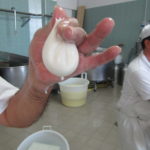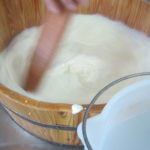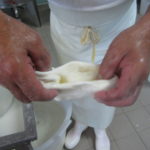Eight years ago, the Italian Ministry of Foreign Affairs started a week-long focus to promote fine Italian cuisine in the world. The multi-faceted focus is on Italian agriculture and food products. The topic of Italian cuisine in the world is so broad that it’s hard to know where to start. From health benefits of the Mediterranean diet to the quality of Italian food products and ingredients, there’s a lot of ground to cover. Let’s begin with the social and economic reasons that so many people migrated from Southern Italy in the late 19th and early 20th centuries. This mass arrival of immigrants changed nations. We can focus later on how Italian cuisine in the world changed once the Italians settled on the distant shores of North America.
How the Unification of Italy changed the world
As many who have traveled with us recently have learned, the diaspora of southern Italians over a century ago is linked to the unification of Italy in 1861. Northern patriots, with the goal of kicking out foreign rulers, began a civil war to unify the country under one government and monarchy. The Austro-Hungarian empire ruled the northeast, the Vatican owned much of central Italy, the Savoy family ruled Piedmont and Sardinia, and the Spanish Bourbons ruled over Sicily and southern Italy.
Known as The Kingdom of the Two Sicilies, this kingdom was wealthier than all the rest of Italy put together. Its two major capitals in Naples and Palermo were filled with riches, art, huge palaces and a large aristocratic class. When they eyed unification, their goal in the south was two-fold: kick out the Spanish rulers and steal the immense wealth for their new country. The Savoy king in Piedmont bankrolled the war and became the monarch of unified Italy.
The development of the new country profoundly changed the southern Italian economy. It led to poverty and joblessness for the majority of people in the south. The nobility was heavily taxed, the coffers were looted, and the power of the ruling class left Naples and Palermo, transferring to the new capital in Rome. In two generations, people who had had jobs and livelihoods were left with nothing but a dream of escape: the New World.
Taking with them what they could carry, as well as memories and recipes from their families, towns and homeland.
The influence of Southern Italians in the US
One hundred years ago, products imported from other countries weren’t readily available in the US. When the southern Italians arrived in America, they didn’t find what they needed to recreate their dishes. Olive oil was unavailable, tomatoes were more acidic than those grown on the volcanic soil of their homeland, red wine was generally french and hard to come by. So the Italians set about making their home in America, planting vineyards in California, adding sugar to tomato sauce, and importing food staples from their homeland.
A ban on importing pork products from Italy opened the door for Italian butchers to produce sausages and salami. Mozzarella cheese is a southern Italian staple that doesn’t travel well, so delis began making it fresh. American soldiers stationed in southern Italy during WWII fell in love with pizza and pasta. Their return aided the explosion of Italian restaurants and pizzerias outside of Italian enclaves.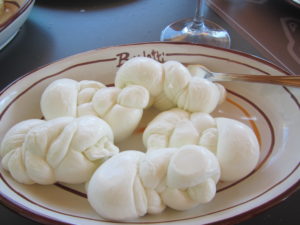
The use of oregano by southern Italians, originally a Greek herb, became the one herb that made a dish “Italian”. People from different Italian regions intermarried or settled next door and shared recipes. Over generations, American-Italian cuisine developed, often bearing little resemblance to dishes you find today in Italy.
Differences between raw ingredients in Italy and the US
 As easy as it is to find really high-quality ingredients in Italy, it’s almost impossible in America. Italian food is simple, relying on the freshest ingredients. Those ingredients must be of the highest quality to stand alone. Two reasons make it difficult to reproduce authentic Italian food in the US: 1. our raw ingredients are grown with herbicides and pesticides and sprayed or gassed for a longer shelf life; and, 2. our processed foods have added fillers, sugars and chemicals.
As easy as it is to find really high-quality ingredients in Italy, it’s almost impossible in America. Italian food is simple, relying on the freshest ingredients. Those ingredients must be of the highest quality to stand alone. Two reasons make it difficult to reproduce authentic Italian food in the US: 1. our raw ingredients are grown with herbicides and pesticides and sprayed or gassed for a longer shelf life; and, 2. our processed foods have added fillers, sugars and chemicals.
A good example is ricotta cheese. In Italy, ricotta is fresh and local, made with only milk, cream, vinegar and salt. It is widely available in every grocery store and deli and is a delicious staple in many dishes. Ricotta cheese in America almost always contains additives such as locust bean gum and carraggenan. It’s not delicious and, unlike in Italy, is never consumed by itself.
Glyphosate, widely used as Roundup in America to harvest wheat, is illegal in Europe. Thus, Italian wheat products such as flour, pasta and bread don’t contain this harmful additive. Grape seeds contain high amounts of antioxidants and most grapes eaten in Italy still contain them. But in America, seedless grapes have widely propagated, leaving 80% of grapes sold in the US without seeds, more than any country in the world. Because Italy is so much smaller than America, most fruits and vegetables are considered locally grown and don’t need to be gassed or treated to lengthen the shelf life. Italians still eat with the seasons and so what they consume is fresher and more densely packed with nutrients.
There are so many DOP food products in Italy that have rules and regulations. From the geographic region to ingredients and process, DOP products are a consumers guarantee of quality. But that complex subject is for another article!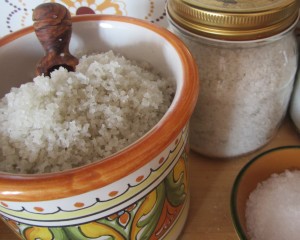
Mediterranean Diet
The Mediterranean Diet means eating locally, eating seasonally and eating foods that haven’t been hybridized or genetically modified.
To wrap it up
Italian cuisine in the world is developing. Many Italians from every region now live and work in America. Imported Italian products are widely available and Eataly stores are everywhere. It’s easier now to learn and create authentic Italian dishes if you pay attention to your ingredients and seek out the highest quality. Traveling to Italy is an easier and less expensive vacation than it was in the past. We love sharing authentic recipes and helping foodies and food professionals grow in their appreciation for Italian cuisine in the world today!
www.eccolacucina.com
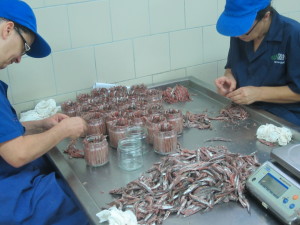 They eat a lot of anchovies in Italy. In fact, anchovies are the base of Italian umami. As diverse as each regions’ cuisine is, anchovies are one of the things that pulls a diverse cuisine together into a whole. Delicious and versatile, the anchovy is an abundant fish high in omegas and essential fatty acids. They are easy to cook, whether batter dip and fried, served with a salsa of capers and parsley, or quick “cooked” in vinegar and dressed with olive oil and parsley. They are also widely preserved, salted and canned to use in a variety of ways, on pizza, on bread, and in pasta sauces. Following an ancient Roman recipe for garum, modern Italians along the southern coasts brine anchovies and allow them to age in wooden barrels. The resulting liquid gold is the definition of umami: savoriness.
They eat a lot of anchovies in Italy. In fact, anchovies are the base of Italian umami. As diverse as each regions’ cuisine is, anchovies are one of the things that pulls a diverse cuisine together into a whole. Delicious and versatile, the anchovy is an abundant fish high in omegas and essential fatty acids. They are easy to cook, whether batter dip and fried, served with a salsa of capers and parsley, or quick “cooked” in vinegar and dressed with olive oil and parsley. They are also widely preserved, salted and canned to use in a variety of ways, on pizza, on bread, and in pasta sauces. Following an ancient Roman recipe for garum, modern Italians along the southern coasts brine anchovies and allow them to age in wooden barrels. The resulting liquid gold is the definition of umami: savoriness. Anchovy by any other name…
Anchovy by any other name… The ancient Roman condiment garum was the liquid resulting from fermenting anchovies in salt and was used to flavor most of their foods, the original Italian umami. Today, they make a similar product, called colatura, on the Amalfi coast in the tiny towns of Cetara and Vietri. This amber colored liquid is the essense of anchovy and is used sparingly to flavor a variety of dishes. The colatura is made in the summer by layering the anchovies with sea salt in a wooden barrel, then weighting and pressing them until the winter. When the colatura is ready they open a hole in the barrel and let the liquid drip out. It has a strong odor, as you can imagine, like asian fish sauce, but it delicious in seafood dishes, giving it an extra savoriness that is essential. Add it to spaghetti tossed with extra virgin olive oil, minced garlic, parsley and anchovy fillets.
The ancient Roman condiment garum was the liquid resulting from fermenting anchovies in salt and was used to flavor most of their foods, the original Italian umami. Today, they make a similar product, called colatura, on the Amalfi coast in the tiny towns of Cetara and Vietri. This amber colored liquid is the essense of anchovy and is used sparingly to flavor a variety of dishes. The colatura is made in the summer by layering the anchovies with sea salt in a wooden barrel, then weighting and pressing them until the winter. When the colatura is ready they open a hole in the barrel and let the liquid drip out. It has a strong odor, as you can imagine, like asian fish sauce, but it delicious in seafood dishes, giving it an extra savoriness that is essential. Add it to spaghetti tossed with extra virgin olive oil, minced garlic, parsley and anchovy fillets.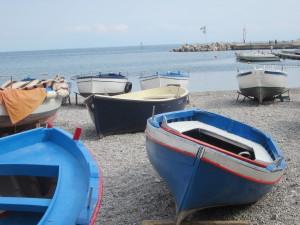
 L
L